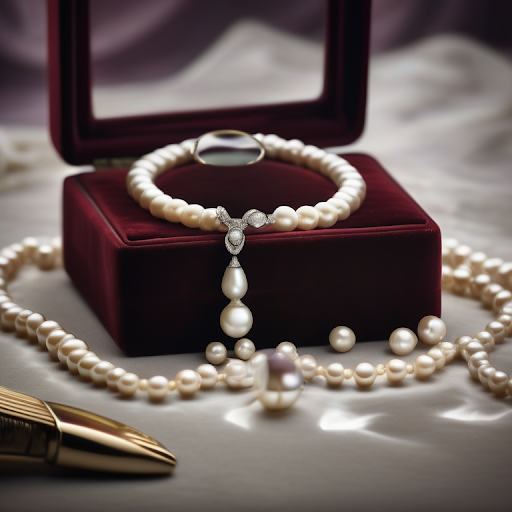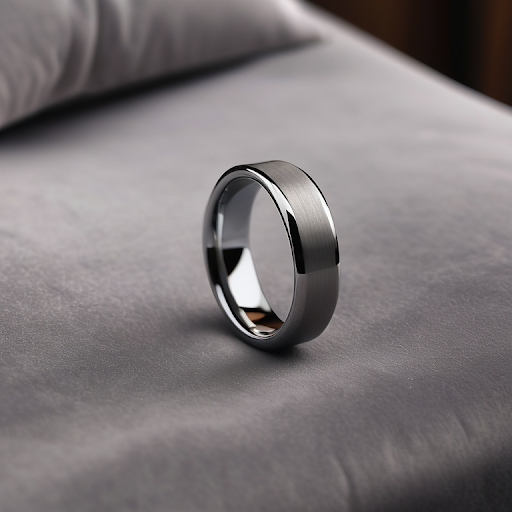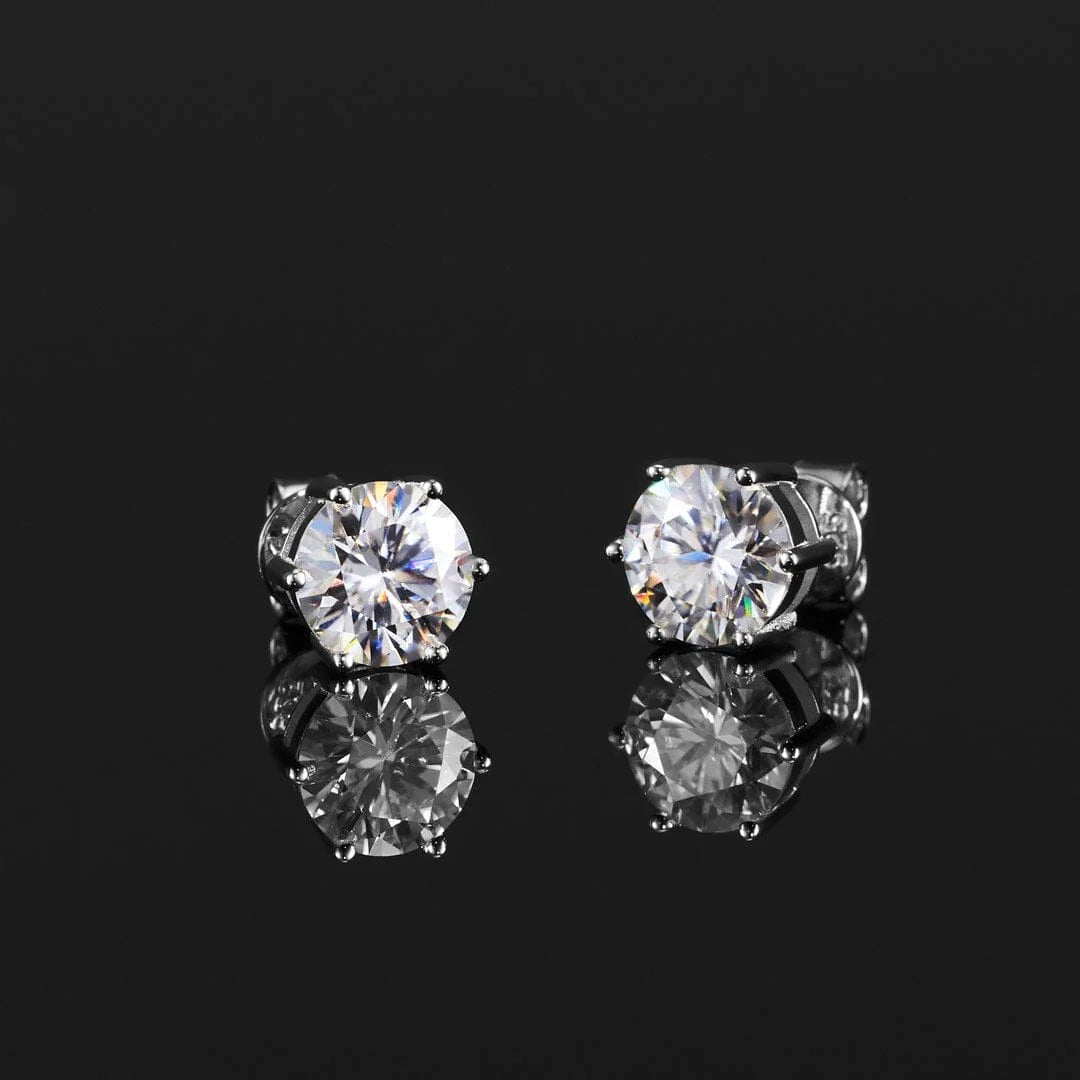
How to Tell If a Pearl Necklace Is Real? Essential Guide
Pearls have long been admired for their timeless beauty and elegance. Whether worn as a necklace, bracelet, or earrings, pearls add a touch of sophistication to any outfit. However, with the rise of imitation pearls flooding the market, it has become increasingly important to know how to tell if a pearl necklace is real. So, how to tell if a pearl necklace is real?
While experienced jewelers and gemologists can easily distinguish between real and fake pearls, the average consumer may find it challenging to differentiate the two.
This essential guide will provide you with the knowledge and techniques to determine the authenticity of a pearl necklace, ensuring that you make an informed purchase and avoid being fooled by imitations of this classic piece of jewellery.
Key Highlights
Let's get to know the key highlights of how to tell if a pearl necklace is real or not:
- Real pearls have a gritty texture when rubbed against the teeth, while fake pearls feel smooth and glassy.
- Physical examination tests include the texture test, visual inspection, and weight test to determine the authenticity of pearls.
- Advanced verification techniques such as the luster and light reflection test, drill hole inspection, and magnification can provide further clues.
- DIY home tests such as the rub test, tooth test, and water test can help in identifying real pearls.
- Seeking professional assessment from a gemologist and obtaining a certificate of authenticity is recommended for valuable pearl jewelry.
- FAQs will be addressed in a separate section at the end of the blog.
How to Tell If a Pearl Necklace Is Real?
Before diving into the various tests and techniques for identifying real pearls, it's important to understand the basics of pearl authenticity. A real pearl is formed naturally inside an oyster or mollusk, while imitation pearls are man-made.
Real pearls can be further classified into natural pearls and cultured pearls. Natural pearls are extremely rare and are formed when an irritant, such as a grain of sand, enters the oyster's shell. The oyster then secretes layers of nacre, the substance that gives pearls their lustrous appearance, gradually forming a pearl.
Cultured pearls, on the other hand, are created through a similar process, but with human intervention. A small bead or piece of shell is inserted into the oyster to stimulate pearl growth. It's worth noting that almost all pearls on the market today are cultured.
The Natural vs. Cultured Pearls Debate
The debate between natural and cultured pearls centers around the level of human intervention in the pearl formation process. Natural pearls are highly prized for their rarity and unique shapes, as they are formed without any human intervention. On the other hand, cultured pearls are more readily available and can be produced in a range of shapes and sizes.
While natural pearls have historically been favored for their exclusivity and organic formation, advances in pearl culturing techniques have made cultured pearls almost indistinguishable from their natural counterparts. Ultimately, the choice between natural and cultured pearls comes down to personal preference and budget.
Identifying Common Imitation Pearls
Imitation pearls can be identified by their uniformity in shape and size, lack of weight, and a surface that may peel or flake. Real pearls have variations in shape, size, weight, and a lustrous, warm feel. Professional jewelers can also help authenticate pearls.
Generally, you look into these matters:
- Look for uniformity in shape and size.
- Check for lack of weight compared to real pearls.
- Examine the surface for peeling or flaking.
- Real pearls have variations in shape, size, and weight.
- Feel for a lustrous, warm texture.
Physical Examination Tests
Physical examination tests are an effective way to determine the authenticity of a pearl necklace. These tests involve observing and analyzing the pearls themselves to look for specific characteristics that are present in real pearls but absent in fakes.
By examining the texture, shape, size, color consistency, and weight of the pearls, you can gain valuable insights into their authenticity.
Additionally, advanced verification techniques such as luster and light reflection tests, drill hole inspections, and magnification to spot imperfections can provide further confirmation of a pearl's authenticity.
The Texture Test: Real Pearls vs. Smooth Counterfeits
One of the easiest ways to distinguish between real pearls and smooth counterfeits is through the texture test. Real pearls have a unique texture that is characterized by small bumps and ridges on the surface, also known as faux pearls. These imperfections are natural growth features and are present in all real pearls.
In contrast, smooth counterfeits, such as imitation pearls made from glass or plastic beads, have a perfectly smooth surface with no visible bumps or ridges. By running your fingers along the surface of the pearls, you can feel for these small imperfections that indicate the authenticity of the pearls. Remember, real pearls are not flawlessly smooth like their fake counterparts.
Visual Inspection: Shape, Size, and Color Consistency
Another important test to determine the authenticity of a pearl necklace is visual inspection. Real pearls come in a variety of shapes, ranging from perfectly round to slightly irregular. Each pearl is unique and will have its own characteristic shape. Imitation pearls, on the other hand, are often perfectly round and lack the natural variations and irregularities of real pearls.
Size consistency is also a key factor to consider. Real pearls may have slight variations in size, while imitation pearls are typically uniform in size. Additionally, real pearls have a natural color consistency, meaning that each pearl may have subtle color variations. Imitation pearls, on the other hand, often have a uniform and artificial-looking color.
When inspecting the color of a pearl, look for a consistent and natural-looking colour throughout the necklace. Real pearls will have color variations, while imitation pearls will have a uniform and artificial color.
The Weight Test: Comparing Heft and Balance
The weight test is another useful method for determining the authenticity of a pearl necklace. Real pearls tend to have more weight to them due to the layers of nacre that make up their structure. When comparing a real pearl to a fake one, you will notice a noticeable difference in weight.
Imitation pearls, especially those made from lightweight materials like plastic or glass beads, will feel much lighter in comparison. Additionally, real pearls have a balanced weight distribution, meaning that they will feel evenly distributed when held in your hand. In contrast, fake pearls may feel imbalanced or top-heavy.
By comparing the weight and balance of pearls, including the presence of small ridges along the inside wall from where they grew in the oyster shell, you can gain valuable insights into their authenticity.
Advanced Verification Techniques
In addition to physical examination tests, there are advanced verification techniques that can provide further confirmation of a pearl's authenticity. These techniques involve a more detailed analysis of the pearls using specialized tools and equipment. The luster and light reflection test involves examining the pearl's surface to determine the quality and intensity of its luster.
A genuine pearl will have a radiant and reflective surface, while an imitation pearl may appear dull or lackluster. The drill hole inspection involves examining the drill holes in the pearls for any signs of irregularities or inconsistencies, which can indicate imitation.
Using magnification to spot imperfections allows for a closer examination of the pearls, as genuine pearls will have small imperfections and irregularities that are not present in fakes.
Luster and Light Reflection Test
The luster and light reflection test is a crucial technique for verifying the authenticity of a pearl necklace. The luster of a pearl refers to its unique shine and radiance, which is caused by the way light interacts with the layers of nacre on the pearl's surface. Genuine pearls have a deep and vibrant luster that reflects light in a captivating way.
When examining a pearl under a light source, a genuine pearl will have a bright and reflective surface, while an imitation pearl may appear dull or lackluster. By carefully observing the luster and light reflection of a pearl, you can gain valuable insights into its authenticity and determine whether it is a real deal or a counterfeit.
The Drill Hole Inspection for Authenticity Clues
Another advanced verification technique for determining the authenticity of a pearl necklace is the drill hole inspection. When pearls are drilled for stringing, genuine pearls will have clean and crisp drill holes.
There will be no material buildup or buckling of nacre layers around the drill holes. Additionally, real pearls will not have any sharp or jagged edges around the drill holes. By examining the drill holes of the pearls using a magnifying glass, you can look for these authenticity clues.
In contrast, fake pearls may have uneven material buildup around the drill holes, often consisting of acrylic paint used to cover an inner glass or plastic bead. They may also have chipped or peeling pearlescent outer coatings around the drill holes, revealing the plastic or glass bead within.
Using Magnification to Spot Imperfections
Using magnification is another effective technique for verifying the authenticity of a pearl necklace. By examining the pearls under magnification, you can spot small imperfections and irregularities that are present in genuine pearls but absent in fakes.
Real pearls will have microscopic surface variations, such as small bumps, pits, or irregularities, that are natural growth features of the pearls.
These imperfections are unique to each pearl and provide evidence of their authenticity. By using a magnifying glass or other magnification tools, you can conduct a detailed examination of the pearls to look for these small imperfections. Imitation pearls, on the other hand, will have smooth and flawless surfaces that lack these natural imperfections.
DIY Home Tests for Pearl Verification
Feeling unsure about your pearl necklace? Try these DIY home tests for quick verification. Start with the genuine pearl rub test, slight friction means authenticity. Next, the tooth test, run pearls against your front teeth; real pearls feel gritty.
Lastly, the buoyancy water test, to see if they float – real pearls sink due to their density. These simple checks can give you a good initial clue about the authenticity of your precious pearls.
The Rub Test: Feeling for Friction Between Pearls
When checking the authenticity of a pearl necklace, the rub test can be a simple yet effective method. By rubbing two pearls against each other, you can feel friction. Genuine pearls will have a slight grittiness or a sandy texture due to the layers of nacre, while fake pearls made of plastic or glass will feel smooth.
This tactile examination can help you distinguish between real pearls and imitation ones by identifying the natural surface texture of genuine pearls. Another tip is to feel for the coolness of the pearls, as authentic pearls tend to feel cooler to the touch due to their natural properties.
The Tooth Test: A Simple Tactile Method
When checking the authenticity of a pearl, a simple tactile method involves using the front teeth. Gently rub the pearl against the edge of your tooth. A real pearl will feel slightly gritty or rough due to the tiny imperfections on its surface, known as the tooth test.
In contrast, fake pearls made of fake plastic pearls or glass will feel smooth since they lack these natural irregularities. This quick and easy test can help differentiate between genuine and imitation pearls.
Water Test: Observing Buoyancy and Movement
Gently drop the pearl necklace into a glass of water. Watch closely for its behavior. Real pearls will sink to the bottom due to their higher density. If it stays afloat or moves easily on the surface, it might be fake. Remember, a genuine pearl's weight and composition affect its buoyancy. Observe any unusual movements or rotations, indicating potential imitation.
Another test that can be done is the Vinegar Test, where vinegar is used to differentiate between fake and real pearls. This simple water test, along with the Vinegar Test, can provide initial insight into the authenticity of your precious pearls. Enjoy experimenting!
Professional Assessment and Certification
Seeking a professional jeweler or gemologist is the best way to authenticate your pearl necklace. Their expertise in identifying subtle differences in luster, surface imperfections, and drill holes can confirm the pearls' authenticity. A certification from a reputable expert adds value and assures quality.
When uncertain about your pearls' origin or quality, consulting a professional ensures you are getting the real deal. Don't hesitate to reach out for a thorough assessment and certification of your precious pearls.
When to Seek a Gemologist's Expertise
Identifying the authenticity of a pearl necklace can be challenging, especially with advanced techniques. If you’re unsure after conducting DIY tests or basic examinations, it’s time to seek the advice of a professional gemologist.
A trained expert can provide in-depth analysis using specialized tools like magnification devices or luster tests to determine the true nature of your pearls.
When the uncertainty lingers, consulting a gemologist ensures you receive accurate information about the quality and authenticity of your precious pearl jewelry.
Understanding Pearl Appraisal and Certification
When looking to understand pearl appraisal and certification, it's essential to know the value of these documents in the jewelry world. An appraisal from a professional jeweler can provide you with crucial information about the authenticity and quality of your pearls.
Certification, on the other hand, typically involves a detailed examination of the pearls by experts in the field, offering you a guarantee of the pearls' authenticity and quality. Both of these documents are invaluable in ensuring that you have the real deal when it comes to your precious pearls.
Conclusion
Distinguishing between real and imitation pearls involves a blend of visual inspection and physical tests. From the texture and weight to luster and drill hole examination, each step plays a crucial role in verifying the authenticity of your pearls.
DIY home tests like the rub, tooth, and water tests offer practical insights, but for a definitive evaluation, seeking professional assessment and certification is recommended.
Remember, caring for your pearl necklace not only maintains its authenticity but also ensures its longevity and beauty. So, embrace these verification techniques to cherish your genuine pearl jewelry for years to come.
Frequently Asked Questions
Can Real Pearls Be Damaged by Water or Chemicals?
Real pearls can be damaged by chemicals like perfumes and hairsprays. They are also susceptible to damage from chlorine in pools or hot tubs. Avoid exposing them to these substances to preserve their luster and quality.
How Does the Price of Real Pearls Compare to Fake Ones?
Real pearls are generally more expensive than fake ones due to their rarity and unique characteristics. Factors like luster, surface quality, and weight contribute to the price difference. When assessing pearls, consider these features to distinguish between real and fake options accurately.
Are There Specific Colors That Indicate a Pearl Is Real?
Certain colors like white, cream, rose, and black are common in real pearls. However, dyed or imitation pearls can display a range of colors. Genuine pearls may exhibit overtones in hues such as pink or green.
How Do I Care for My Pearl Necklace to Maintain Its Authenticity?
To maintain the authenticity of your pearl necklace, store it separately from other jewelry to prevent scratches. Clean it with a soft cloth after wearing it to remove oils. Avoid contact with chemicals and perfumes. Have it restrung periodically by professionals.
Can Pearls From Old Jewelry Be Tested for Authenticity?
Yes, pearls from old jewelry can be tested for authenticity using advanced techniques like luster examination, drill hole inspection, and magnification for imperfections. Professional assessment by a gemologist can also confirm their authenticity. DIY tests such as the rub test and water test can provide additional verification.


